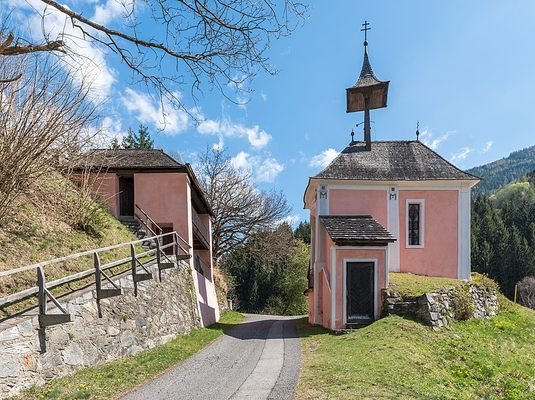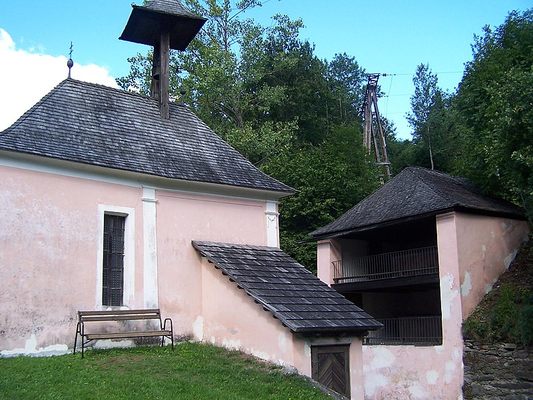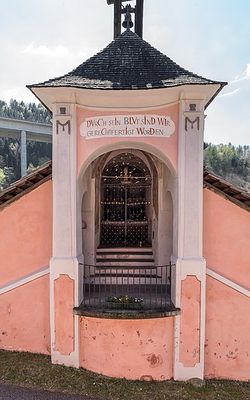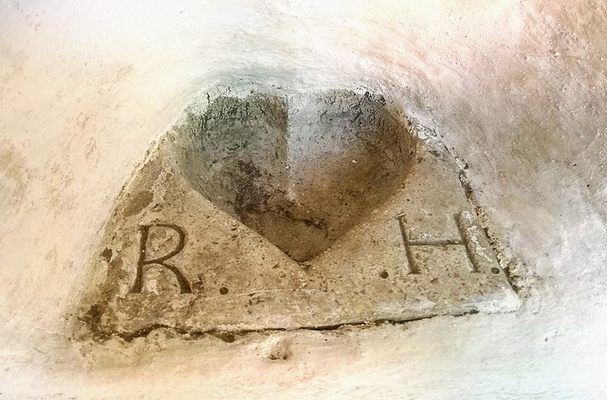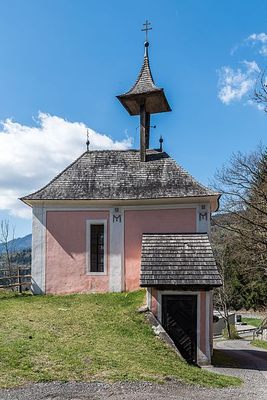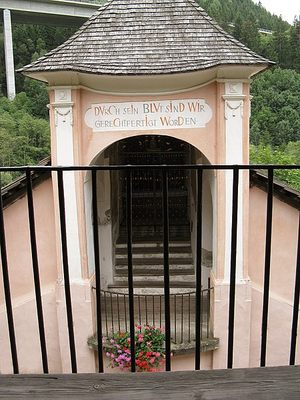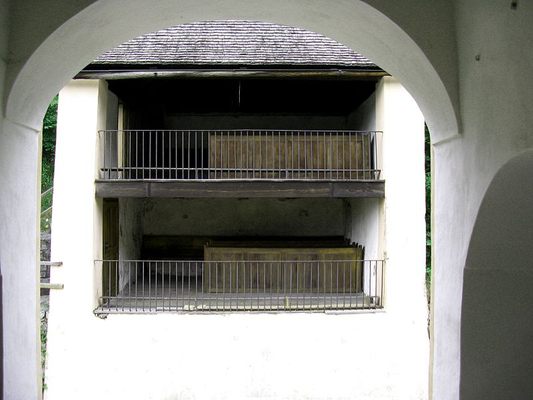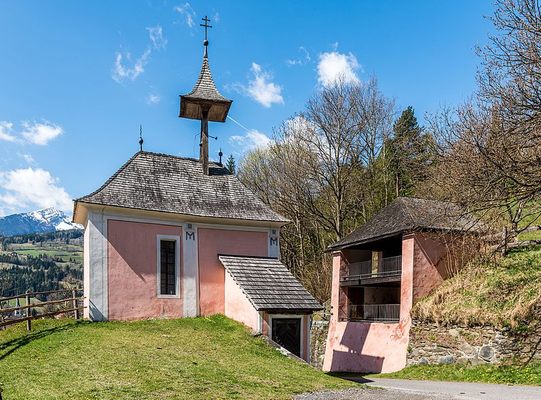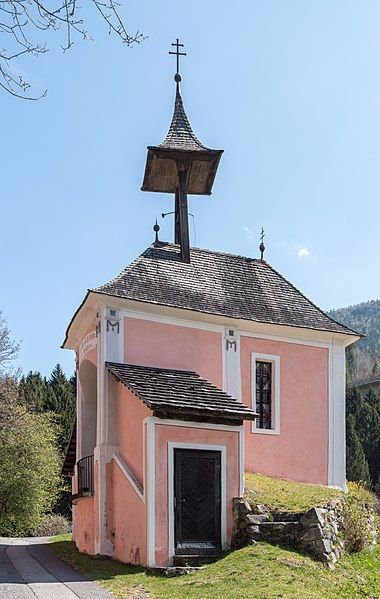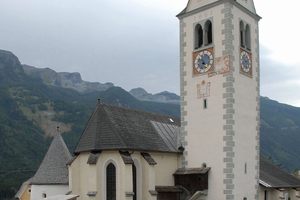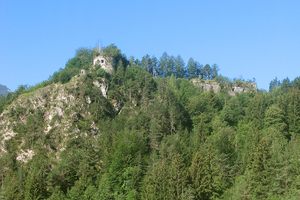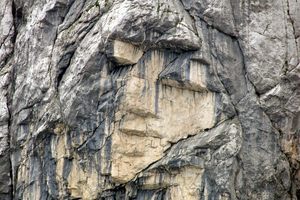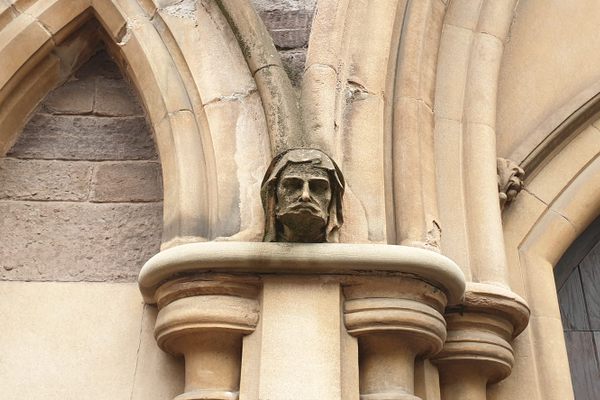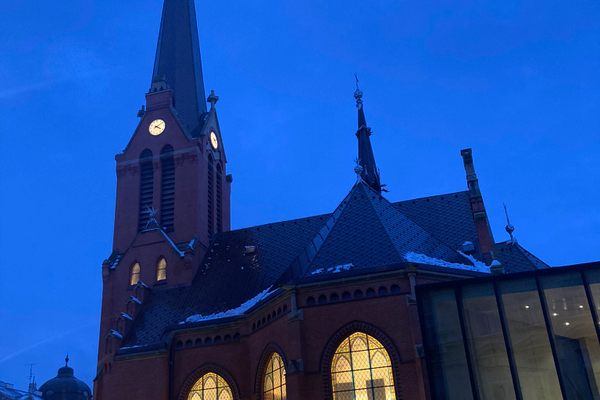About
If you attend a service in the small Roman Catholic church Sankt Maria in the Liesertal north of Gmünd in Carinthia, you might find that the pastor has to pause the sermon for an unusual reason: A road runs through the middle of the church. While the pastor preaches his sermon in the sanctuary on the east side of the road, the churchgoers sit in the building on the opposite side of the road.
As early as 1443, a Marterl (a wayside shrine erected on roads and paths to encourage prayer) was erected at this point on the former Roman road that led to Salzburg. At the time, the road was an important trade route from Venice to Salzburg, and the Marterl gave travelers a place to pray.
In 1754 the roadside shrine was replaced by a chapel. Since there was not much space between the road and the slope, a chapel was built with the sanctuary about two meters above the road, and worshipers gathered on the street in front of the church.
Eventually, a pastor felt sorry for the pilgrims who often stood in front of him in the rain, and had a two-story structure built on the opposite side of the road. In this building, there are two rooms with chairs and benches. This building is also open to the road, and both buildings are secured by wrought-iron gates.
Services now took place in two buildings: the priest stood in one, and congregants in the other. If a vehicle came by, he had to interrupt his sermon. This happened more often up until 1905, because up until then the road had been a federal road. Then the bypass road, which still exists today, was built. Even today, local traffic still passes through the church.
The fresco in the sanctuary is said to be based on a design by Michelangelo. He gave the draft to his companion Orciel dela Volterra, who made a picture of it. This picture came to Gmünd via detours and was painted in the sanctuary when the church was built. The weather destroyed the fresco. In 1861, the Austrian painter Josef Messner painted over it in oil. That didn't last long either and was repainted, corresponding to the original, in 1944.
Other special features in the church are a heart-shaped holy water container and the inscription above the sanctuary, in which the year of construction of the opposite part of the church is hidden in Roman numerals. The inscription reads "Durch sein Blut sind wir gerechtfertigt worden" ("By his blood we have been justified"). If you add the Roman numerals painted in red, you get 1784. In the vault of the chapel, there is a small drawing that refers to the year 1443 and the construction of the Marterl. The wooden open bell tower and the wooden roof covering also offer a special sight.
The church is regularly renovated and thus preserved, though today only a few regular services are held there. Preservation is carried out by the city of Gmünd, because in the 19th century the community representatives committed themselves by a document to keep the church forever, and this document is binding.
Related Tags
Know Before You Go
The Kreuzbichlkapelle can be visited at all times.
If you want to go inside you need to go there during daytime hours. The church is locked at night.
Community Contributors
Added By
Published
April 19, 2022
